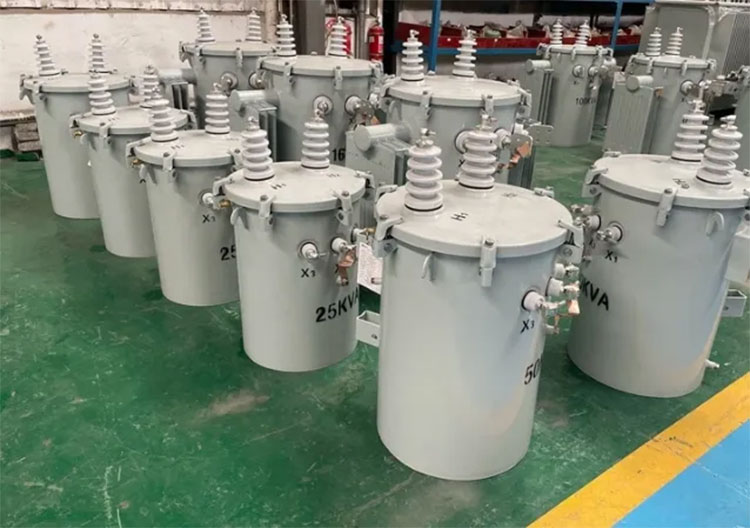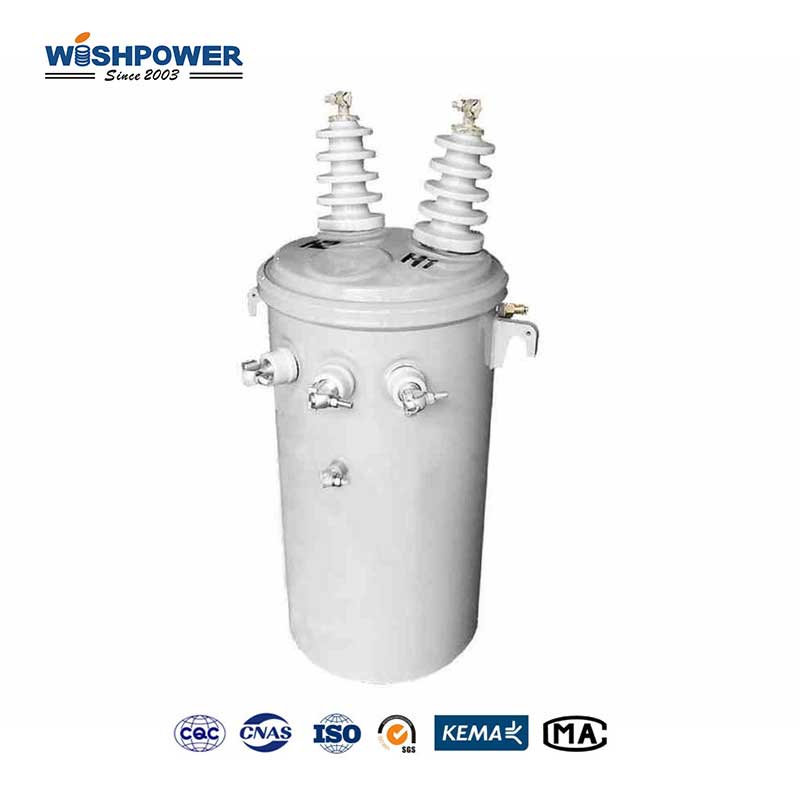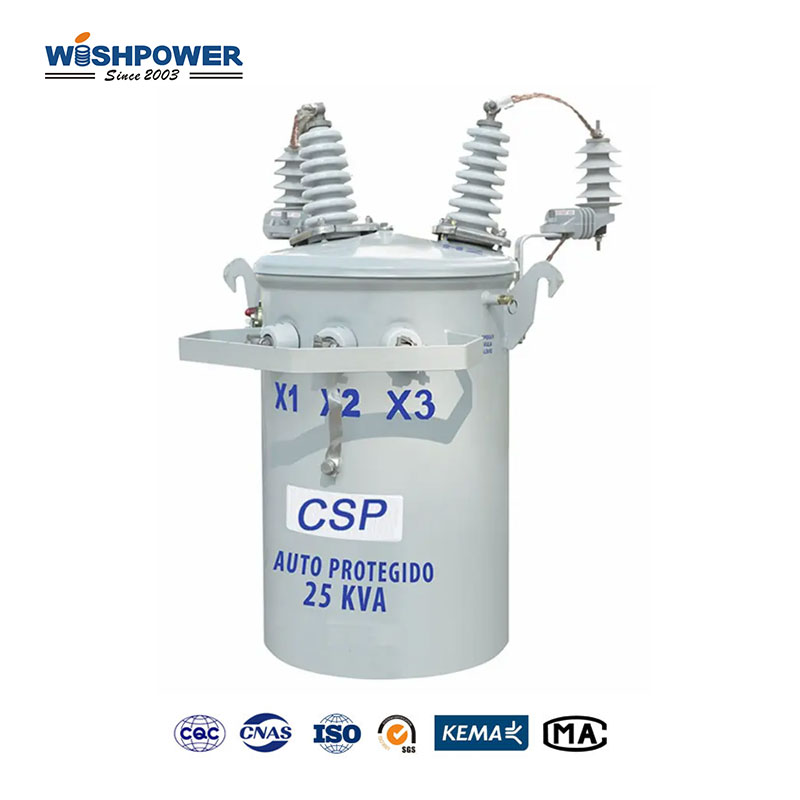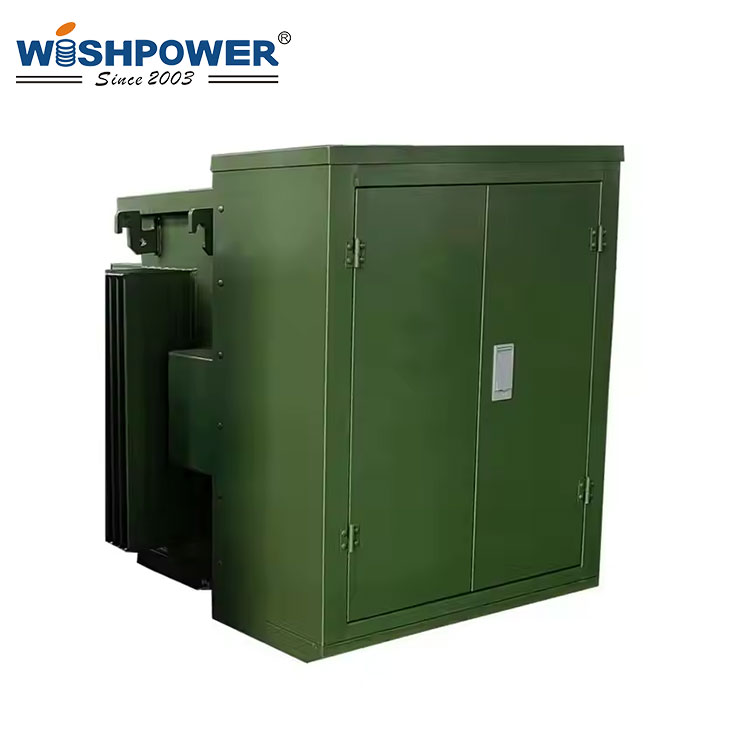If you are dealing with some transformers within the current power distribution networks, you need to understand the difference between transformer types before you decide on what equipment to use for a transformer. The widely used transformer types are the conventional transformers and the Single Phase Completely Self Protected (CSP) transformers which differ in features, advantages, and application.

What is the difference between conventional and CSP transformer?
Protective features Structural Design and Integration
Conventional Transformers
Basic power distribution units and conventional transformers need surrounding devices for protection and monitoring. Step-up or step-down voltage is the only input of these transformers and they require supplementary systems to handle faults such as overloads, short circuits, and surges. In the absence of integrated protective mechanisms, they are more flexible, but also more dependent on the supplemental infrastructure.
CSP Transformers
However, the protective components are a part of what a CSP transformer is, a self-contained unit. Internal circuit breakers or fuses, thermal overload protection, and lightning arresters are included, replacing external protective devices. This combined approach permits higher levels of automation and fault management; CSP transformers are more productive and secure for new applications.
Fault Protection and Response
Conventional Transformers
Conventional transformers utilize external, external equipment, as well as circuit breakers, fuses, or surge arresters, to protect against fault conditions. This setup provides for tailored protection systems, but leads to slower fault response times and greater risk of damage should the external protection fail.
CSP Transformers
Autonomous fault handling is well mastered by CSP transformers. In the event of an electrical fault, the internal protective mechanisms automatically disconnect the transformer from the network and minimize the effect it has on connected systems. Not only does this rapid response protect the transformer but also stops cascading failures in the distribution network.
Installation and Space Requirements
Conventional Transformers
Conventional Transformers
The need for the installation of such additional equipment as Protective Devices and Control Systems for conventional transformers is also considered. This means more complexity in the direction of installing the apparatus and hence it consumes more space to accommodate the external components. Consequently, in the cases where space and infrastructure are issues, conventional transformers work better.
CSP Transformers
All-in-one CSP transformers are also compact, streamlined designs that simplify installation and minimize space. Due to their self-contained nature, they become perfect for where there is less, such as urban or residential spaces. This translates to reduced installation effort and faster deployment as well as corresponding lower initial costs.
Maintenance and Operational Costs
Conventional Transformers
Maintenance and Operational Costs were split into regime-related and regime-independent components.
Conventional Transformers
Conventional transformers need external protective devices for their cover such that the maintenance involves lots of components and systems. Over time this means higher operational costs as each part of the setup needs regular inspection, servicing, and potential replacement.
CSP Transformers
In the SP application, there are fewer external components of the transformer, hence, the maintenance requirements and operational costs are lower. For long-term use, they are a cost-effective solution as the integrated design makes troubleshooting and repair simpler.
Safety and Reliability
Conventional Transformers
The effectiveness of the external protective systems relies heavily on the safety of conventional transformers. As these systems can be customized for certain purposes, they are at risk of failure which may cause the equipment to be damaged or service to be interrupted.
CSP Transformers
CSP transformers come with built-in protective features and are more safer and reliable. The internal mechanisms will protect to make sure it won’t fail from common issues like overloading, overheating, or a lightning strike.
Applications and Suitability
Conventional Transformers
Conventional transformers are used due to their customizable nature in industrial or high-capacity applications where specific protection is required. Installation in locations with generous space and sophisticated infrastructure, to support the external components are also possible.
CSP Transformers
For residential, commercial, and small-scale industrial uses where space, safety, and ease of installation are priorities, CSP transformers are ideal. Due to their compact design, relatively low cost, and autonomous mode of operation, they are well suited for modern power distribution networks where a reliable, low cost and low maintenance mode of operation is required.
Advantages of CSP Transformers Over Conventional Transformers
Integrated Protection: The CSP transformers neutralize the need for augmentation, and thus are a streamlined and automatic option.
Faster Fault Response: Faults are immediately isolated by built-in mechanisms and damage and service disruption is minimized.
Space Efficiency: Its compact design is perfect for installations having limited space.
Cost-Effective Maintenance: Fewer components to manage make maintenance easier and cheaper.
Enhanced Safety: It also provides a higher degree of equipment and personnel safety by including internal protection systems.
CSP Transformers Challenges
CSP transformers have many benefits, but also limits. With their integrated design this means that if a component fails the entire transformer is encased or needs expensive repairs. In addition, CSP transformers offer less of a degree of freedom in their design and customization than regular transformers, limiting their suitability for specialized applications.
Conclusion
Through the specific requirements, one chooses between conventional and CSP transformers. In situations where flexibility and customization matter, conventional transformers are better, and in areas where compactness, safety, and ease are more important, CSP transformers are better. Knowing the differences between these two kinds of transformers, the decision makers can choose the most suitable transformer, the transformers are more efficient and reliable for the power supply.
If you have different opinions or want to know more, please leave a message on the website or contact us directly at info@wishpower.net

















